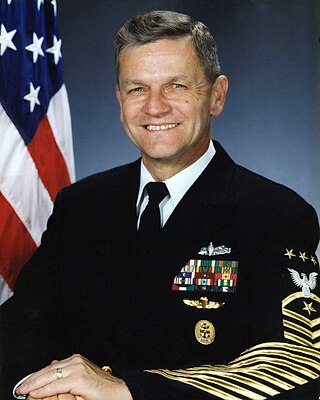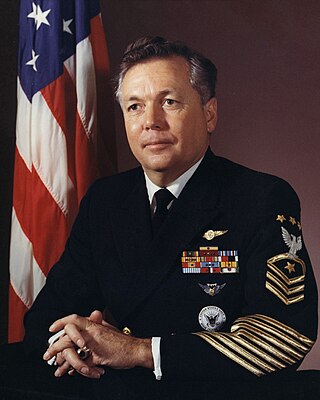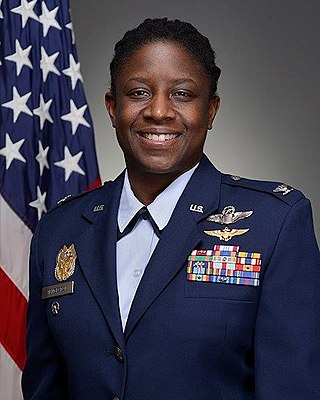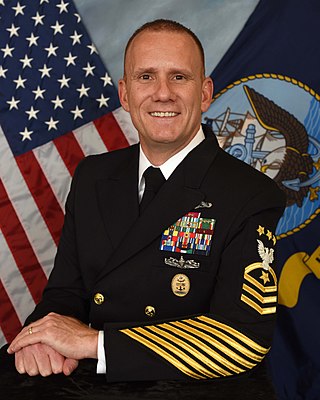Military career
After graduating from high school, Sanders initially began his military career by joining the United States Air Force in February 1954. Upon being discharged in 1957, Sanders joined the Air Force Reserve. He attended Huntingdon College in Montgomery from January to May 1958.
Sanders enlisted in the United States Navy on 9 May 1958, and after receiving his clothing issue at Charleston, South Carolina, he was transferred to Naval Air Technical Training Center (NATTC) at NAS Memphis, Tennessee, to attend Aviation Electronics Technician "A" School. Upon graduation from "A" school at NATTC Glynco, Georgia, he reported for duty as an enlisted aircrewman on EC-121 type aircraft. He advanced to petty officer third class on 16 December 1959, and to petty officer second class on 16 November 1962.
Sanders was transferred in March 1964 to attend an instructor training course at Memphis, and ultimately reported to Naval Air Maintenance Training Detachment (NAMTD) 1099 at NAS Key West, Florida, as an Anti-Submarine Warfare Systems Instructor. He returned to NATTC Memphis in June 1967 as a student, completing the avionics "B" school in February 1968. He advanced to chief petty officer on 16 February 1968.
Reconnaissance and Maintenance Squadron One, homeported at Atsugi, Japan, was his next assignment from May 1968 until June 1971. While serving as detachment chief petty officer at Da Nang, Vietnam, Sanders received two Air Medals and the Combat Action Ribbon. He advanced to senior chief petty officer on 1 March 1971.
In May 1971, Sanders was transferred to Naval Air Maintenance Training Detachment 1002 at NAS Albany, Georgia, and later at NAS Key West. He served as an instructor on RA-5C aircraft and Leading CPO during this tour. He was advanced to Master Chief Avionics Technician in August 1974. Sanders reported to Fighter Squadron 151 aboard USS Midway homeported in Yokosuka, Japan, in September 1974 where he served as maintenance chief on F-4N aircraft and as Command Master Chief. He was awarded the Navy Achievement Medal during this tour.
Sanders was transferred to NAS Pensacola, Florida, in October 1977 where he served as Air Operations Maintenance Chief until March 1978. He then served as Command Master Chief for NAS Pensacola and Training Air Wing Six.
Sanders had been one of the six final candidates for selection as the fourth Master Chief Petty Officer of the Navy (MCPON) in 1979 but then-Chief of Naval Operations Admiral Thomas B. Hayward selected Thomas S. Crow for the job.
Sanders reported to Naval Air Facility Lajes, Azores, in February 1980 where he served as the maintenance chief and as command master chief. During this tour, he received the Navy Commendation Medal. As he neared the end of his MCPON tour, Crow suggested that Sanders apply again for selection as MCPON. Sanders declined but his commanding officer at Lajes nominated him anyway. Sanders transferred to the Naval Education and Training Program Development Center Saufley Field at Pensacola, Florida in February 1982 to serve as the Special Projects Division Officer, then on 16 July 1982, the new Chief of Naval Operations, Admiral James D. Watkins, announced that he had selected Sanders as the fifth Master Chief Petty Officer of the Navy. He was sworn in on 1 October 1982.
During Sanders' tenure as the MCPON, the grooming standards for sailors made a major change, as males were no longer authorized to wear beards. The first modern navy instruction governing physical readiness (OPNAVINST 6110.1) was written, the forerunner of the instruction still in use. Yearly physical readiness tests became mandatory, and body composition standards were introduced to the fleet. These tests late became bi-annual requirements. The Vietnam-era GI Bill had expired, and the modern GI Bill, which helps fund college educations for active duty military members and veterans, was created. As MCPON, Sanders made combating Navy voter apathy a top priority. In his travels around the fleet, Sanders encouraged sailors to get involved in the government they served. He advocated writing to their Congressional representatives to make their voice heard. He also stressed the role of senior enlisted leadership in the Navy chain of command.
Sanders was relieved by William H. Plackett on 4 October 1985, as Sanders retired from active duty. He serves today as the executive assistant to the executive vice president of the Naval Aviation Museum Foundation in Pensacola, Florida. His wife, Mozelle, died in 1990.

The master chief petty officer of the Navy is a unique non-commissioned rank and position of office of the United States Navy, which is designated as a special paygrade above E-9. The holder of this position is the most senior enlisted member of the U.S. Navy, equivalent to the sergeant major of the Army, chief master sergeant of the Air Force, sergeant major of the Marine Corps, master chief petty officer of the Coast Guard, and chief master sergeant of the Space Force. The holder of this rank and position is the most senior enlisted sailor in the Navy, unless an enlisted sailor is serving as the senior enlisted advisor to the chairman. The current MCPON is James Honea.

Naval Air Station Pensacola or NAS Pensacola, "The Cradle of Naval Aviation", is a United States Navy base located next to Warrington, Florida, a community southwest of the Pensacola city limits. It is best known as the initial primary training base for all U.S. Navy, Marine Corps and Coast Guard officers pursuing designation as naval aviators and naval flight officers, the advanced training base for most naval flight officers, and as the home base for the United States Navy Flight Demonstration Squadron, the precision-flying team known as the Blue Angels.

Joe R. Campa Jr. is a retired United States Navy sailor who served as the 11th Master Chief Petty Officer of the Navy.

John Hagan is a retired senior sailor of the United States Navy who served as the eighth Master Chief Petty Officer of the Navy.

Duane R. Bushey is a retired senior sailor of the United States Navy who served as the seventh Master Chief Petty Officer of the Navy.

William Howard Plackett was a senior sailor in the United States Navy who served as the sixth Master Chief Petty Officer of the Navy.

Thomas Sherman Crow, fourth Master Chief Petty Officer of the Navy was born in 1934, in McArthur, Ohio, and graduated from McArthur High School in 1952. After battling cancer, he died at his home in San Diego, California on November 30, 2008. He was interred in Fort Rosecrans National Cemetery in San Diego, California.

Robert James Walker, Sr. was a senior sailor in the United States Navy who served as the third Master Chief Petty Officer of the Navy. He was born in Baldwin, New York, and attended grammar and high school in Oxford, New York.

John Donaldson Whittet was a senior sailor in the United States Navy who served as the second Master Chief Petty Officer of the Navy.

John "Jack" Lawrence Finley was a United States Navy aviator and was selected as an astronaut.

Training Squadron EIGHT SIX (VT-86), also known as the "Sabrehawks," is a United States Navy advanced jet training squadron based at the Naval Air Station Pensacola, Florida. Training Squadron 86 is a tenant command of Training Air Wing 6. They are a training squadron flying the T-45C Goshawk. Their tailcode is F and their radio callsign is ROKT.

Merryl Tengesdal is an American retired career military officer who is the first and only Black woman to fly the United States Air Force's U-2 spy plane used for specialized high-altitude reconnaissance missions. She is one of five women and only the fourth Black person to be in the U-2 program. She shares the plane's nickname, The Dragon Lady.

Naval Air Station Glynco, Georgia, was an operational naval air station from 1942 to 1974 with an FAA airfield identifier of NEA and an ICAO identifier of KNEA.

Rick D. West is a retired United States Navy sailor who served as the 12th Master Chief Petty Officer of the Navy.

Naval Support Activity Mid-South, in Millington, Tennessee, is a base of the United States Navy. A part of the Navy Region Southeast and the Navy Installations Command, NSA Mid-South serves as the Navy’s Human Resources Center of Excellence. The base is host to several commands and other military tenants: Navy Personnel Command, Navy Recruiting Command, the Navy Manpower Analysis Center, a Marine Corps Reserve Company - Bridge Company C and the US Army Corps of Engineers Finance Center. More than 7,500 military, civilian, and contract personnel are assigned/work on base.

Michael D. Stevens is a United States Navy sailor who served as Master Chief Petty Officer of the Navy (MCPON). He became the 13th MCPON on September 28, 2012, when he accepted the passing of the ceremonial cutlass from outgoing MCPON Rick D. West. He was succeeded by Steven S. Giordano on September 2, 2016.

Naval Air Technical Training Center (NATTC) is the parent command of the Airman Apprenticeship Training School, and provides technical training schools for nearly all enlisted aircraft maintenance and enlisted aircrew specialties in the U.S. Navy, U.S. Marine Corps and U.S. Coast Guard.

Patrol Squadron 30 (VP-30) is a maritime patrol squadron of the United States Navy, established on 30 June 1960. It is based at Naval Air Station Jacksonville, Florida.

Steven S. Giordano is a retired United States Navy sailor who served as the 14th Master Chief Petty Officer of the Navy.




















